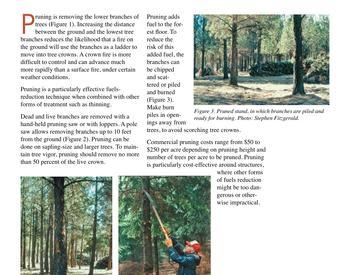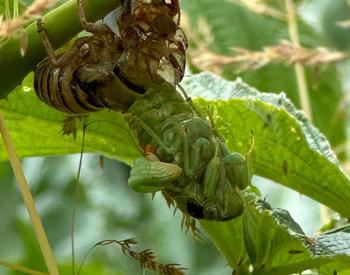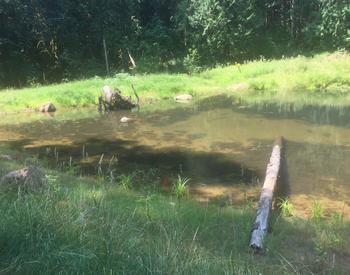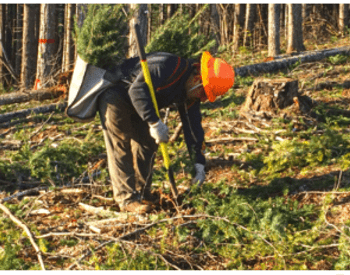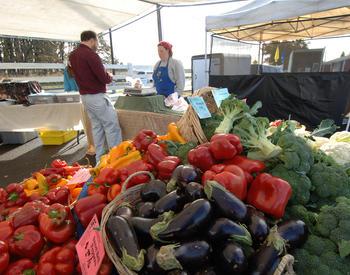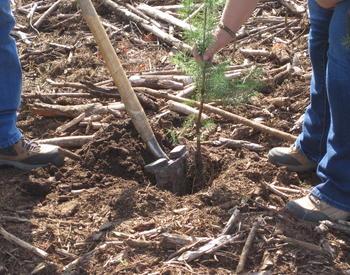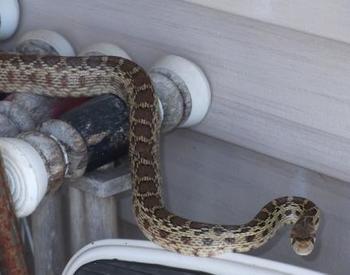Transcript
(light-hearted guitar music)
- Hello and welcome.
Many of you are probably
aware that a forest operation
like a clear-cut can actually create
a lot of good pollinator habitat.
Oregon has many native pollinators,
and more and more people
are thinking about ways
to help take care of them.
So a clear-cut is a
pretty major disturbance.
It does a lot of good
things from the perspective
of a pollinator.
It creates some new nesting habitat,
and especially it produces
a riot of new growth
of many different species of
flowering shrubs and herbs.
I'm standing here in a clear-cut.
I think it's about three year old,
hasn't had a lot of herbicides,
and you can see just an amazing number
of different flowering shrubs
and flowering herbs that
have developed in this time.
All that's great for native pollinators.
So the habitat that we
get from doing a clear-cut
comes with a couple dilemmas,
one, under forest
practices rules in Oregon,
we still have to reestablish a forest.
And all that wonderful growth
that the pollinators like
also represents competition
for our new seedlings.
Another issue is that
this wonderful new growth
that we have in this rebounding forest
is also fairly temporary.
As soon as the trees, the
young Douglas fir trees
close canopy, then it goes away.
Let's talk about both of those.
We did a couple earlier videos
looking at some ways to
help manage this dilemma
of competition and seedling establishment.
Hopefully you might look at those.
One talks about spot sprays
and the other one talks
about purposeful skips
in our herbicide treatments.
The other limitation we have has to do
with the fact that this is a
fairly short-lived abundance
for the pollinators.
So again, we might look to other
places on a forest property
that have a more enduring opportunity,
such as a landing, a
meadow or roadside area.
We also did a couple short videos
talking about your opportunities there.
We can also try to extend the time
that a young plantation has
these different flowering
and nesting resources in it.
There aren't a lot of possibilities
there because, as I say,
it depends on how quickly the
trees grow in closed crown.
So the main opportunity we have there
is to change the density
that we have in our stand,
in our young plantation,
that is, we can play with the arrangement
and the spacing distance
of the seedlings we plant.
I'm here in a clear-cut,
which represents that,
has a couple different
demonstration or trial spacings.
What we have tried to
do is plant seedlings
at some different spaces in
a variable-density approach,
where rather than going
out and planting everything
on a strict grid, 10 by 10,
12 by 12, we try to mix it up,
make it a little clumpy
and a little gappy.
So some trees are gonna
be a little closer,
and some trees are gonna be farther apart.
The trees that are closer,
we're not gonna gain anything, right?
They're gonna close canopy soon.
But the bigger gaps that we have,
those create spaces where
those flowering resources
can persist longer into the stand
and be providing that flowering resource
for those pollinators for
longer time than would happen
if we had just gone out
and planted on a grid.
So the variable-density
approach sounds great.
It actually probably is pretty great
from that perspective of
providing some more varied habitat
for bees and other wildlife.
A lot of things like
these open conditions,
but it does create a few
management challenges.
So having in your mind,
"Ah, let's go out and plant
this variable density,"
when you're working
with professional planting
crews who have, for years,
gone out and very purposefully planted
at a very specific spacing,
that might be hard to change 'em.
You can tell 'em that, and
then when you get out there,
things aren't as variable as you think.
So I think it's doable,
but it just takes a
little different thinking
and a little more advanced
planning as you prepare
to make a planting that
uses the variable spacey,
clumpy gappy kind of approach.
Talk to your planters.
Maybe give different planters
different spacing targets.
There are several different approaches
that might make sense to you,
but they also have to
make sense to the planters
so that you come out with something
that looks like what you imagine.
And of course, if you can be out with them
when they're doing that to
help make sure they understand
and are following through on
it, that would be great too.
Once you got 'em in the ground, of course,
hopefully at a little variable spacing,
we know not every seedling
survives the first year or two.
You may or may not need to go replant.
Take a careful look at it
before you decide to replant.
The skips, the dead trees that
create little skips and gaps,
those might be at a level
that are totally acceptable
or even advantageous to you
from the pollinator point of view.
So if you have a high enough success rate
to meet your replanting,
your restocking objectives,
you're within the Oregon
Forest Practices Guidelines,
but there's a little
extra space here or there,
well, maybe you can skip the idea
of going out and replanting.
And once you have 'em fully established,
I know it hurts sometimes,
but think about going out
and doing your young stand thinning
or your pre-commercial
thinning a little extra early
while the trees still
are sharing that space
with the other flowering shrubs
and haven't killed them off.
And then you can extend
that shrub flowering stage
a little longer into
the life of the stand.
The point I'm trying to get across here is
you have some limited
options in trying to extend
the flowering period in a plantation.
And those efforts do come with
some costs and challenges.
We want to still manage the competition
enough to be successful
in our reforestation.
But depending on what
your weed pressure is,
blackberries or something,
you may not want to do that.
Some people hate the idea of
another two or three years
of struggling with blackberries.
So it'll depend on your situation
of what you have and what
you're willing to do.
You can also think about
how many hardwoods,
how much competition you want
from hardwood species, maples or cherry.
And that's a decision you might make
as you go and do your
pre-commercial thinning.
And you have to be thinking
about how much growth,
how much rate of growth
might I be willing to give up
for this competition which is
giving me some other benefits.
As you try to figure out how
to balance your objectives
of growing trees and
also providing habitat,
you have to kind of find a new balance.
How much slash and woody debris
is comfortable for you to leave?
How much brush competition
are you okay with?
How many hardwoods do you wanna leave?
But in the end, maybe you just have to get
a little more comfortable with things
being a little more messy.
Good luck.
Bee habitat decreases when the canopy of the forest closes. This video discusses ways to extend the life of the habitat.




